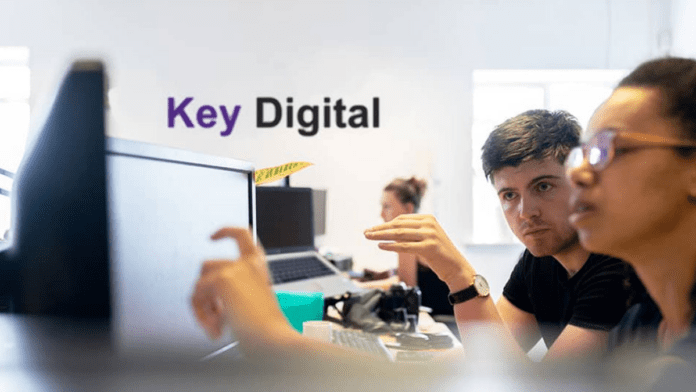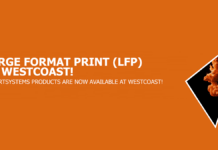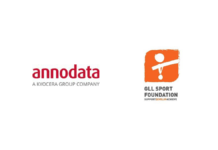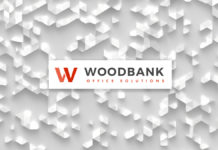Business printing is facing key challenges, but manufacturers and resellers in the sector are responding to these – including through inkjet printers, according to Key Digital’s Andy Ratcliffe.
Business printing is facing three key challenges – sustainability, productivity and asset management, according to Epson’s recent report, ‘Business Printing in 2023: sustainability and productivity take precedence’.
Print manufacturers such as Epson and resellers such as Key Digital are responding to this challenge with an increased focus on all three areas to ensure that businesses get what they need from their print-based assets, including using inkjet rather than laser printers.
It is a time of change across the business spectrum as hybrid working and digitalisation change the way people work. As Andy Ratcliffe, managing director of Key Digital, notes, the company is seeing volumes per unit and per customer going down. “But our revenues are going up because we’re selling more devices,” he says. “Taking a more strategic view, the whole marketplace has changed. There’s changing technology, particularly with Epson products, but it’s just happened at a favourable time in the market. Volumes have dropped, the value of the printed page has dropped and that’s changed some customers’ buying criteria and habits and there’s more focus on getting more productivity per person and on sustainability.”
Productivity
As Andy mentions, a key focus is on productivity. “Everybody wants more from their multifunction device (MFD) be they in the office or at home than they did pre-COVID, they need more productivity, more workflow, more out of the device,” he says.
Andy adds that it is often small changes that can make a big difference to productivity levels, which end users might not think of. “For example, an Epson inkjet device requires fewer ink changes than a laser device has, so there’s less user intervention. While that sounds like marketing hype, if you’re in an office where you’ve got people coming in and out hybrid working, and your device needs a toner change, and the person that – pre-COVID – used to do that is now working from home, how does everybody else print? So that you need to change it 10 times less than previously makes for a smoother operation in the office because the office is a different place than it used to be.”
Rise of inkjet
As mentioned, inkjet devices are an effective solution for businesses looking to increase productivity. “Pre-COVID, inkjet was for your home office or really high-end digital printing device,” says Andy. “Your home office because your product was cheap to buy, and your high-end production print because it was cheap to run and fast. And the bit in the middle, the office MFD workspace, was stuck with laser. We’re finding the technologies from both ends have converged and it’s created a sweet spot.”
Andy adds that hybrid working plays into this “Not only with the use of printers, but also things like supply management and managed print services as well. Managed print services have evolved and now the priority is devices in multiple locations.
“It’s managed services rather than managed print services, that’s the key to it. We’ve always talked about MFDs, but they are doing an awful lot more now. People want all sorts of things more than they used to, whether that’s scanning and the workflow around it or accountability about what’s happening with the device, maybe because the management team isn’t in the office, and they aren’t seeing what’s happening. You can take it further than printers to all sorts of asset and resource management in an organisation.
“As an industry, we have always supplied solutions that are about distribution of data and information. When I started and photocopy was analogue, somebody would type a memo, photocopy it and then distribute it out. Invoices would come in, photocopies would be taken of them and they would then be put into different files within the organisation. Then the fax machine came along, and employees would print something off, put it on the fax machine and distribute the information. As an industry, we’ve always been a hub of distributing information within organisations. When we talk about scanning workflow, archiving process automation, for me it’s just an extension. That’s what we’ve always done, we’ve always been key to the smooth running of businesses in terms of storing and distributing information.”
Andy adds that businesses in the print sector are well placed to be a resource for customers. “Our customers want our advice because we’ve got more experience with that than they have with print technology. We’re more about process, understanding the business and then utilising the technology to maximum effect, rather than taking a technology-first approach and then working out why businesses need it.”
Sustainability
Andy notes that Key Digital changed its route to market towards the end of the pandemic. “We sell nationally and remotely rather than face to-face and that’s helped us grow the business to higher than we were pre-COVID. The Epson product is key to us being able to do that as a business because it has fewer moving parts, therefore it’s more reliable and needs less servicing, so we need less service infrastructure. The two complement each other. Obviously, there’s environmental benefits too.”
Indeed, Epson’s report mentions that sustainability is now a major priority for customers, and Andy adds that the demand to reduce energy use and waste plays a large part in buying decisions, often more important than price.
“There are a lot more decisions being made on the sustainable credentials of solutions and suppliers and devices,” he says. “In some cases that is being driven by the customer but there’s a regular situation where customers don’t think about it until you point it out to them and then it becomes of interest and affects the final decision.”
Again, technological advances can help with making devices more sustainable. For instance, artificial intelligence (AI) can make an impact on the printing out of documents. “I can see it prompting users a lot better,” Andy says. “If you think about things like rules-based printing, that’s very logical currently, but I can see a time where AI starts prompting users based on their previous habits.”
Trends
Andy believes that the three key areas for businesses identified by the Epson report of cost, productivity and the environment are likely to continue to be the main priorities for businesses when purchasing printers going forward.
“Currently, those three, in the main, are probably in that order of priority, with cost first,” he says. “But I think it will change with productivity and environment becoming higher priorities in people’s buying criteria, and as a result, the cost will benefit as well, because what’s strange about our industry is often the most environmentally friendly solutions are actually the lower cost ones, which is different to many other industries.”
Andy adds that he believes that there will be more focus on devices lasting longer in the field. There will be more focus from manufacturers on durability, but the fact that print volumes will continue to decline will also have an impact, meaning parts in printers will take longer to wear out.
The increasing digitalisation of businesses, along with the continued use of hybrid working, will also influence the sector. “With the hybrid working model businesses are rationalised in their office space and that means we don’t store paper anymore, as, if paper documents are stored and people are working at home, it needs to be digitised because employees can’t just walk around to someone’s desk and ask them to sign an invoice off,” says Andy. “It must be a digital to ensure that the business runs smoothly.”
Educators
Andy adds that this is where resellers and the like need to take on a role of educator to customers. “We need to educate end users on what they can use devices for, how they can access information, even education around sustainability,” he says.
“It’s our role to educate them that there are other ways out there. You scan something on a laser device, it warms up before you can scan it, even though you don’t print there is a cost from an environmental and energy cost point of view. But with inkjet you don’t get that – it is a lot quicker.”
Future
Andy is confident about the prospects for the print sector. “I’ve been in this industry 30 years and now is the most exciting time in the industry because it has changed, it is changing and that brings opportunity. I would be disappointed if we [Key Digital] don’t grow year-on-year.
“People understand that the embedded applications in the device have become more important as well, because in the same way as that key user for changing the toner might not be in the office today, that expert on scanning, how to send documents etc may be working from home too, so devices have got to be simpler to use and I see that changing.”
Andy adds that how companies like Key Digital support customers is changing as well. “We do far more support calls over web chat than we’ve ever done before,” he says. “We’re experimenting with some conversational AI now around that, but I just see that getting better and better.
“That then changes the whole expectation on service levels from customers. People will talk about four-hour response time, first time fix, all this sort of stuff. If you fast forward five years, you’re going to be giving 24/7 support as you’ll have bots answering lots of common issues that people have because people are working differently.
“The working day isn’t a nine to five in the office anymore, but people are still going to need support. We’re not going to people on help desk 24 hours a day, but we can programme bots to do a lot of the repetitive tickets, such as ‘how do I set this driver up? I’ve got a problem with that?’ All that sort of stuff. It’s not a big leap from where we are.”
















